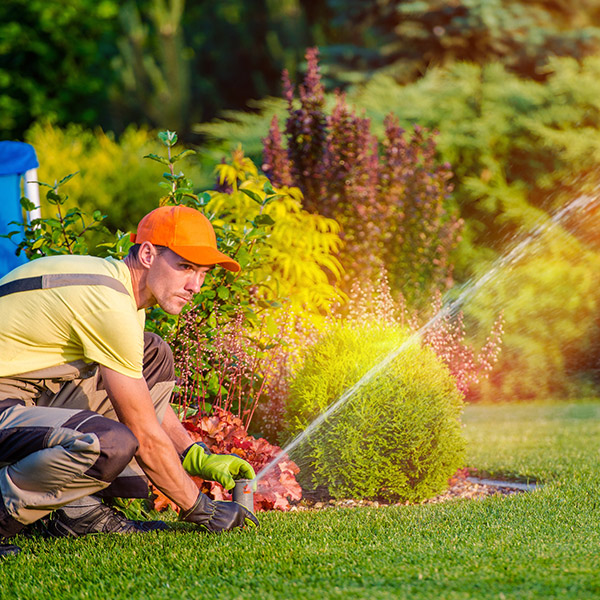
Learn How to Winterize Your Own Sprinkler System
In Wyoming, Colorado and New Mexico having your sprinkler lines blown out for winter costs an average of $100, and must be done every year to prevent costly repairs and possible water damage. Irrigation systems either use rigid PVC pipes that can freeze, expand, and crack if water remains in them through the winter or flexible black pipe called polyethylene pipe. Although these pipes can expand under pressure and do better in cold climates, frozen water can still burst the pipe walls. Spending the money to have a professional clear your irrigation/ underground sprinkler system can be worth the peace of mind for many of us. But if you’re up for the challenge and are a DIY enthusiast, you can master this yearly skill yourself with some attention to detail and care. Here are the basics to get you started, but be sure to research thoroughly before attempting for the first time.
Although some irrigation/sprinkler systems can be drained using manual or automatic drain valves, the surest way to clear your sprinkler lines is using compressed air. Gather an air compressor with a cubic foot per minute (CFM) rating of 80 to 100 for any mainline that is 2 inches or less, an air hose, and safety goggles. It’s extremely important to wear safety goggles and to never stand directly over any component such as a sprinkler head or valve while winterizing your system as excess air pressure can cause flying debris.
To begin, shut off the sprinkler system’s water supply. Depending on how your system was built, the master shut off could be in your basement, utility room, or outdoors. With the compressor valve in the closed position, attach the air hose to the fitting. Activate the station on the controller that is the zone of sprinklers highest in elevation and furthest from the compressor. Then close the backflow isolation valves and slowly open the valve on the compressor to gradually introduce air into the irrigation system until the sprinkler head pops up.
The blowout pressure should remain below the maximum operating pressure specification on that zone and the air pressure should never exceed 80 PSI (pounds per square inch) for PVC pipes or 50 PSI for polyethylene pipes.
Blow out each sprinkler zone one at a time, working your way from the furthest zone to the closest to you and the air compressor. Keep each zone activated for about 2 minutes, or less if no more water is exiting the sprinkler heads. Sustained heat from the compressed air can damage pipes, so don’t run the air compressor on one section for more than 2 minutes at a time. Then release the air pressure and move on to the next section until each has been cleared of water and only mist appears from the sprinkler heads.
Blowing out your own sprinkler system is more involved than other home maintenance projects, but can easily be done with the right tools, an understanding of your sprinkler system, and some basic safety precautions.
If your sprinkler system did freeze and caused water damage, we can help. Give us a call and will work fast to get your home back to normal.
If you do end up with water damage, give us a call. We can help you! It’s important to act quickly. Mold can develop in areas not treated rapidly.
Water Extraction Experts specialize in water damage restoration, sewage cleanup, mold removal, fire & smoke damage restoration, flood damage cleanup. We have 3 locations to serve you.
EMERGENCY 24/7 WATER DAMAGE & MOLD REMOVAL
CALL: 970-581-4498 Northern Colorado
CALL: 307-220-5900 Southeastern Wyoming
CALL: 505-250-6500 Albuquerque and Santa Fe, New Mexico Areas
